Manarah 5: Quod tibi hoc alteri
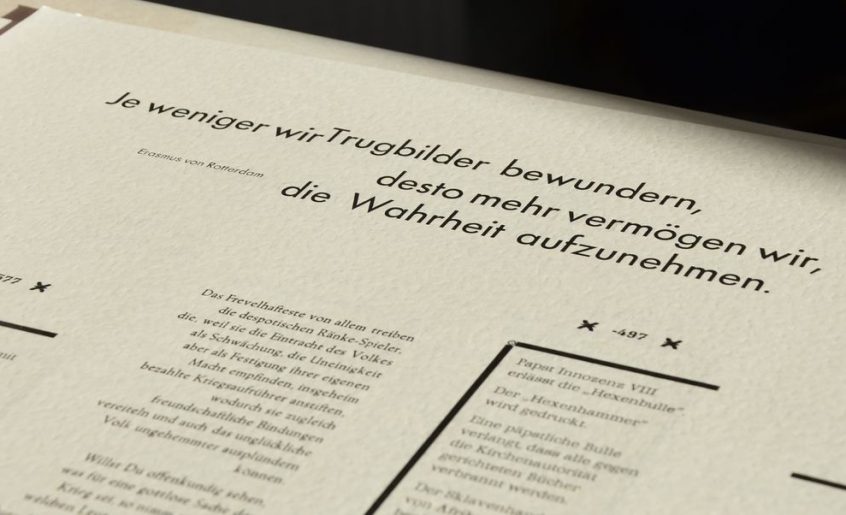
This artist‘s book takes us on a time travel. It is about how we think about humaneness and how we handle it in real.
The journey starts 35.000 years ago, when the first genuine humans, of the species Homo sapiens, are found to live in Europe. These are called Cro-Magnon people, and it is them, who painted those awesome pictures onto the walls of the caves near Chauvet and Lascaux.
The journey draws to its close with year zero, which is normally spoken of as 2022, the year in which the war in Ukraine was begun.
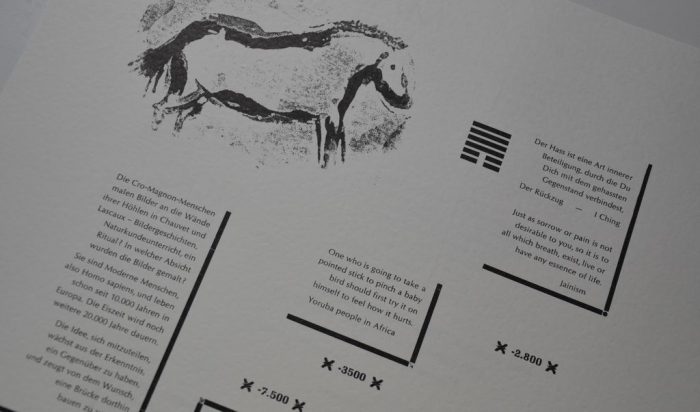
The book tells of what unites us: bridges, libraries, learning, knowlidge that grows from experiences gathered, for example, while travelling.
The book also tells of what divides us: hatred, discrimination, slavery, the burning of witches, the burning of books, oppression – divest a person of their being human, an – while going unpunished – taking this as permission to strip this person off their dignity and eventually even take their life.
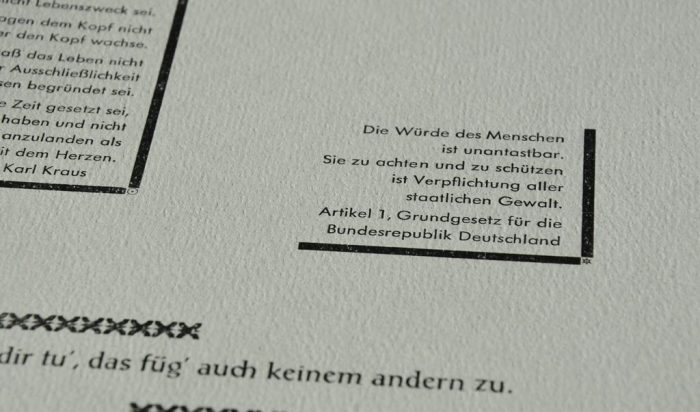
And it, too, tells of that again and again in human history people had to leave their homes because living there was no longer possible due to natural disaster, war or harassment. Or because in other places a better life was possible. There are stories about diseases resulting in depopulation of vast areas, or pests infesting and destroying crops resulting in famine.
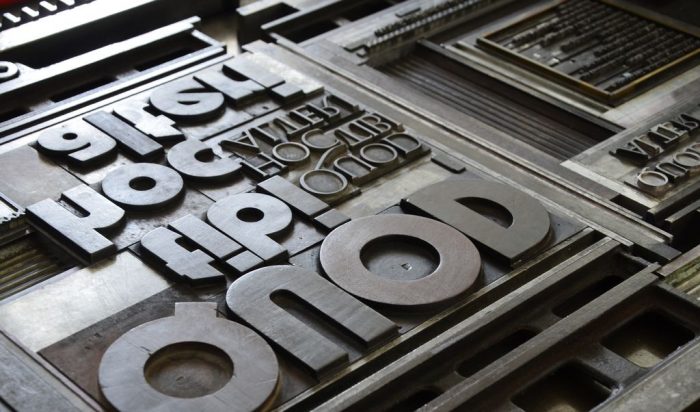
The title of the book has been hewn in stone as an epigraph at Gewandhaus in Braunschweig round about in 1590. During our journey through 35 thousend years more than 40 thinkers and writers are cited – the following sources were used:
Thomas von Aquin, Ali ibn Abi Talib, Babylonian Talmud, Bahá‘u‘llah, Anicius Boethius, Book of Aram, Oksana Bruy, Cora Cobra, Da Hsiau, Deng Dse, Ding Fu Bau, Dschuang Dse, Erasmus von Rotterdam, Epiktet, Erklärung der Menschenrechte, Theodor Fontane, Galileo Galilei, Siddhartha Gautama, Grundgesetz der BRD, Johann Gottfried von Herder, I Ching, Jainism, Evangelist Johannes, Constantin Kaloff, Immanuel Kant, Johannes Kepler, Konfuzius, Lao Tse, Liä Dsi, Lü Bu We, Evangelist Lukas, Mahabharta, Markus Marder, Mmong Dse, Carl von Ossietzky, Francesco Petrarca, Gottlieb Konrad Pfeffel, Albert Schweitzer, Lucius Annaeus Seneca, William Shakespeare, Standing Bear, Werner Stein, Talmud, Testament of the 12 Patriarchs, Kurt Tucholsky, Wiebke Wiesel, Yoruba people, Zenon von Kition, Zoroastrianism.
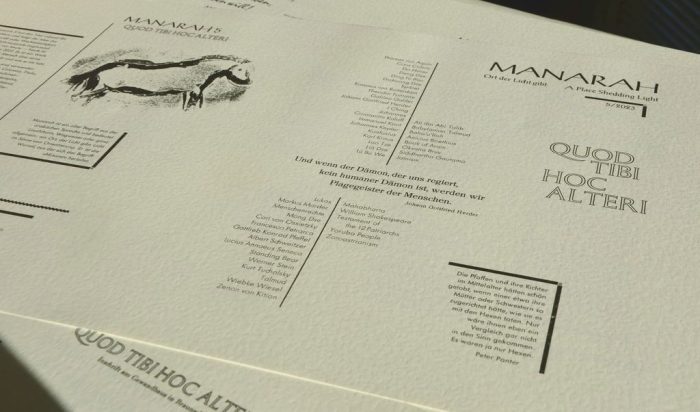
All text is handset from metal type. Certain typefaces were given special roles to play:
Memphis tells of bridges and other thoroughfares
Vendôme tells of diseases, pests and epidemics
Futura book and Optima tell of knowledge, thought and philosophy
Schadow book and typewriter font tell of what happened in real
Brass rules and ornaments lead the was over the ups and downs of history. Time is given in years befor today (today being the year 2022).
In the end it becomes obvious: the knowledge that being kind and understanding towards our fellow men is key to a life in peace and freedom for all of us; that mindfulness and reciprocity can create a world of peace. Understanding that every single one of us is an individual in their their own right opens a door into a life of freedom and peace for everybody. This works because then everybody will be aware of the fact that their own wish for freedom and peace needs to take into consideration the wish for freedom and peace of our fellow man. Now that we have learned, that mankind has known of reciprocity for so long, we only need to learn how to walk mankind‘s century-old talk.
Manarah 5: Quod tibi hoc alteri
Size: 285 x 325 mm
Cover: 4-page cover printed letterpress on Royal Sagitta 250 gsm grey
Pages: 16 pages printed letterpress on Conqueror Contour 160 gsm white
Illustrations: two linoetchings – „Cheval Chauvet“ and „Carrbridge I“
Text: numerous sources, handset from metal type – Futura book, Schadow book, Vendôme, typewriter font, Optima, Post-Antiqua, Post Versal, Columna, Titula, wood type, Trajanus, Imprimatur, Bodoni, Legende, Mistral, Druckhaus, Goethe-Antiqua, Schiller-Fraktur, Trump-Mediäval
Press: printed letterpress on a manual Grafix proof press
Binding: twin pamphlet stitch
Idea, design, linoetchings, handsetting, printing, binding: Annette C. Dißlin
Edition: 20 numbered and signed copies
Year: 2023 at The Fork and Broom Press, Oppenwehe
Enclosed in each copy is one broadsheet printed letterpress on scarlet Zerkall Ingrespaper (90 gsm)
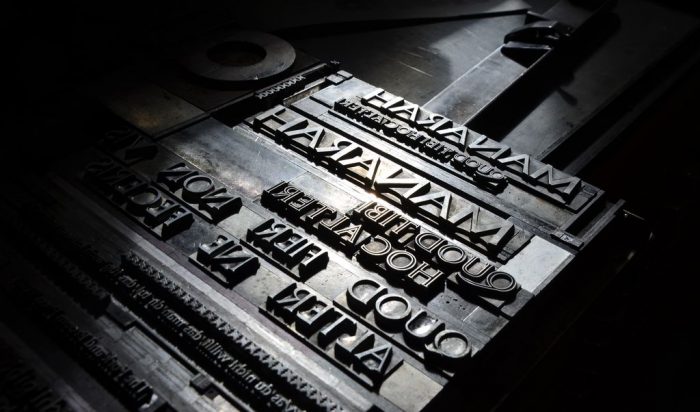
The artist‘s book „Quod tibi hoc alteri“ is the fifth issue in the series Manarah. The term means lighthouse or road sign, a structure that helps to find one‘s direction. Each volume of this series is a collection of texts dealing with one theme. The tetxts can be aphorisms, poems or prose, some in English, some in German. The following titles have already been published:
Issue 1: War (2011)
Issue 2: Time (2011)
Issue 3: Love (2011)
Issue 4: Wind (2018)


[…] „Quod tibi hoc alteri“, artist‘s book, Manarh 5, lino etching […]